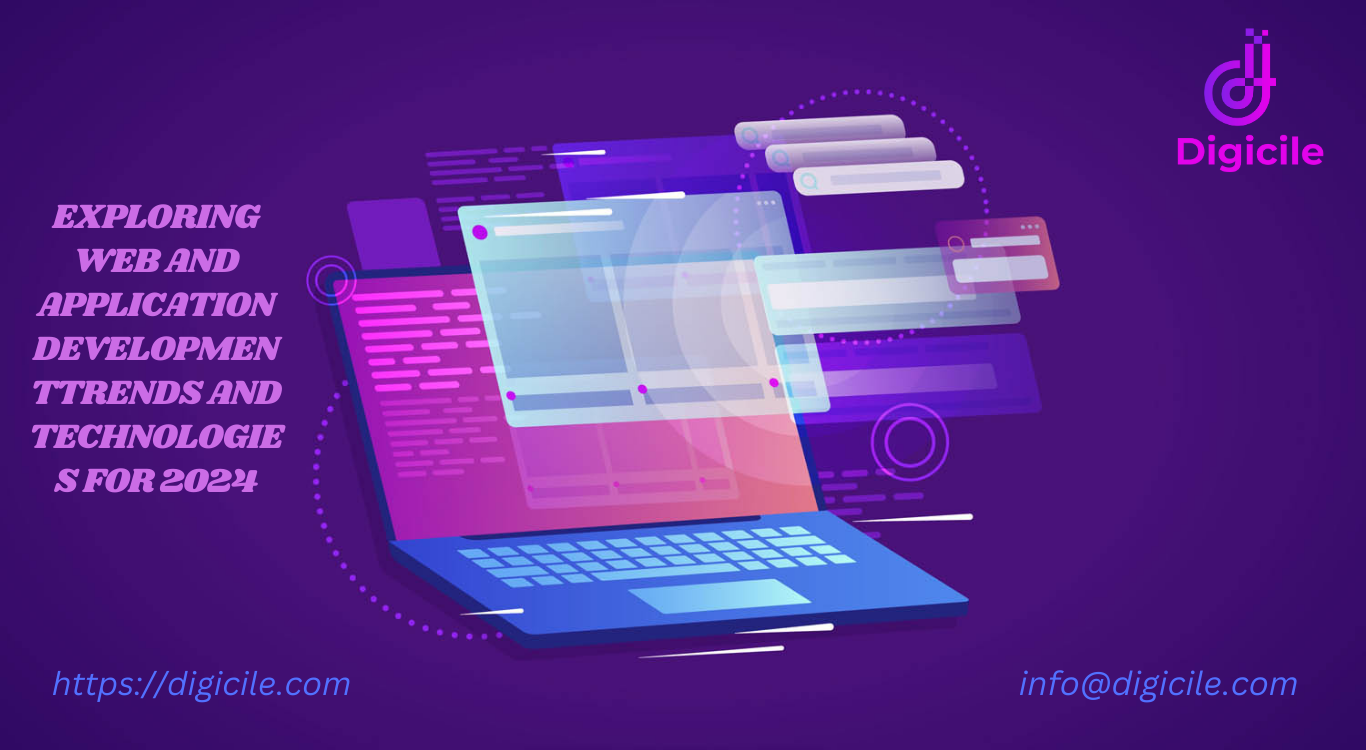As we navigate through 2024, web and application development continue to evolve at a rapid pace. Developers must stay abreast of the latest trends and technologies to create innovative, efficient, and user-friendly applications. Here’s an in-depth look at the key trends and technologies shaping the web and application development landscape this year.
1. Artificial Intelligence and Machine Learning Integration
AI and ML are increasingly becoming integral to web and application development. From enhancing user experiences with personalized content and recommendations to automating routine tasks, these technologies offer significant benefits. AI-powered chatbots, voice assistants, and advanced analytics are just a few examples of how AI and ML are being leveraged to create smarter applications.
2. Progressive Web Apps (PWAs)
Progressive Web Apps continue to gain popularity due to their ability to deliver a native app-like experience within a web browser. PWAs offer offline capabilities, push notifications, and fast loading times, making them an attractive option for businesses looking to enhance user engagement and retention. As more companies adopt PWAs, developers are focusing on optimizing performance and user experience.
3. Edge Computing: Web And Application Development
Edge computing is transforming how data is processed and delivered. By bringing computation and data storage closer to the data source, edge computing reduces latency and improves performance. This trend is particularly important for applications requiring real-time data processing, such as IoT devices and augmented reality (AR) applications. Developers are increasingly utilizing edge computing to enhance application responsiveness and efficiency.
4. Serverless Architecture
Serverless architecture allows developers to build and deploy applications without managing the underlying infrastructure. Services like AWS Lambda, Azure Functions, and Google Cloud Functions enable developers to focus on writing code while the cloud provider handles server management. This approach reduces operational complexity and can lead to cost savings, making it an appealing choice for modern application development.
5. Microservices and Containerization:
The microservices architecture is becoming the standard for building scalable and maintainable applications. By breaking down applications into smaller, independent services, developers can improve deployment agility and fault isolation. Containerization, using tools like Docker and Kubernetes, complements this approach by providing a consistent and portable environment for deploying microservices.
6. Blockchain Technology
Blockchain technology is finding applications beyond cryptocurrencies. Its decentralized, transparent, and secure nature makes it suitable for various use cases, including supply chain management, healthcare, and finance. Developers are exploring blockchain to create more secure and trustworthy applications, leveraging platforms like Ethereum and Hyperledger for smart contracts and decentralized applications (dApps).
7. API-First Development
API-first development emphasizes designing and building APIs before developing the actual application. This approach ensures that APIs are well-documented, consistent, and reusable, facilitating better integration and interoperability between different systems. As the demand for connected applications grows, API-first development is becoming a crucial strategy for developers.
8. Augmented Reality (AR) and Virtual Reality (VR)
AR and VR technologies are making significant strides in enhancing user experiences. From gaming and entertainment to education and healthcare, AR and VR offer immersive and interactive experiences. Developers are leveraging frameworks like ARKit, ARCore, and Unity to create innovative AR and VR applications that captivate users and provide practical solutions.
9. Low-Code and No-Code Platforms
Low-code and no-code platforms are democratizing application development by enabling non-developers to create applications through visual interfaces. These platforms accelerate development, reduce costs, and allow rapid prototyping. While they won’t replace traditional development, they provide valuable tools for developers to quickly build and iterate on applications.
10. Enhanced Cybersecurity Measures
With the increasing number of cyber threats, robust cybersecurity measures are more critical than ever. Developers are implementing advanced security practices, such as multi-factor authentication (MFA), end-to-end encryption, and secure coding standards, to protect applications and user data. The rise of quantum computing is also pushing developers to explore quantum-resistant cryptographic methods.
Conclusion: Web And Application Development
The web and application development landscape in 2024 is marked by rapid technological advancements and evolving best practices. By staying updated with these trends and technologies, developers can create innovative, efficient, and secure applications that meet the demands of today’s users. Embracing these changes will not only enhance development processes but also open up new possibilities for creating cutting-edge digital experiences.






